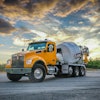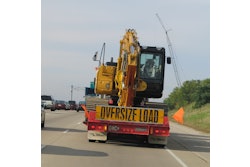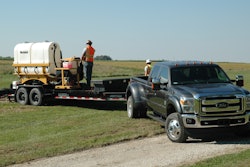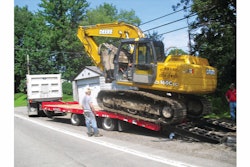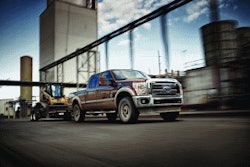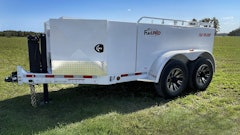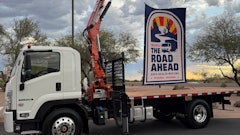
Most vocational trucks are not dedicated tow vehicles and often tow varying loads including equipment and materials to and from the jobsite. Under pressure to get the job done, different truck and trailer combinations are frequently utilized. To safely complete the task, the driver needs to ensure the tow vehicle, trailer and load are properly matched.
When being pressed into towing service, it’s important that both the truck and trailer are matched for the application, purpose and are regulatory compliant. Every component in the towing system has to be properly rated. “Your truck and trailer can only handle the weakest link,” says Christopher Lyon, director of fleet relations, NTEA. “For example, if an axle is rated for 10,000 lbs. but the tires are only rated for 9,000 lbs., the tires become the limiting factor for the overall unit.”
Avoid common pitfalls that are common when a driver only occasionally tows a trailer. Ask yourself a few questions. Are you exceeding the Gross Vehicle Weight Rating (GVWR) or Gross Axle Weight Rating (GAWR)? Are you using the right type of trailer? Are you using the correct load distribution? “These questions must be answered correctly before anyone gets behind the wheel of a truck and trailer,” says Lyon.
“Unlike long haul and over the road applications, there is a much wider variety of truck and trailer combinations available within the vocational sector,” explains Lyon. “Often these trailers can vary in size, loading characteristics and design. This leaves room for unfamiliar operators and opportunity to make errors.”
The first step in reducing these risks is to educate yourself about the equipment. “It is important to know your equipment from the truck to the trailer and ending with the cargo,” says Lyon. “Each component combined will affect operating characteristics of the entire unit. Regulatory compliance is a must and must be understood. Much like a single unit truck, there are regulatory compliance issue beginning with weight restrictions, licensing, etc.”
It begins with understanding the terminology. “Let’s begin with the OEM maximum trailer weight rating (TWR). This value comes from the chassis OEM,” explains Lyon. “It is the maximum weight combination of the trailer and the cargo on the trailer. This should not be confused with the trailer’s gross vehicle weight rating which is assigned by the trailer manufacturer. It is important to note that the OEM trailer rating or the trailer manufacturer’s gross vehicle weight rating cannot be exceeded.”
Gross Combination Weight Rating (GCWR) is the maximum weight of the truck and the trailer and includes everything – equipment, driver, passengers, fuel and payload. “It is important to note that this is not a measurement of the tow vehicle and the trailer,” says Lyon. It is the maximum weight limit set by the manufacturers when the two units are attached.
Then you need to consider component ratings. For instance, GAWR is the load carrying capacity of the axles. “When attaching a trailer, it affects the weight on the axles, especially the rear axles.
Then there is the hitch rating. “It is important to note that a hitch can look similar, but have a very different weight rating,” explains Lyon. “The same goes for couplers as well.” One of the challenges is that many components look the same but can have vastly different ratings, for example D rings and even coupling components. “If I saw a length of chain, I couldn’t tell you if it was a Grade 30 or a Grade 43.”
Identifying the weakest link in your towing configuration can help prevent a failure from a potential overload situation.

